Close your eyes and picture a Viking. Most likely, you envisioned a axe-wielding, muscle-bound man clad in filthy animal skins, wearing a metal helmet with pointed horns protruding from each side. As I learned recently at a behind-the-scenes preview of the new Vikings exhibition at Chicago’s Field Museum, this stereotype couldn’t be further from the truth.
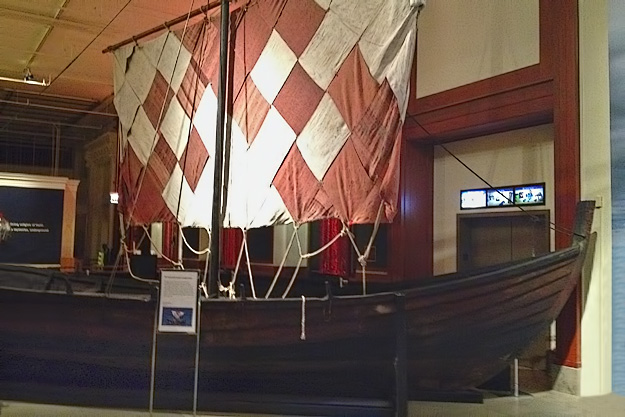
The Vikings left no written history of their culture. Much of what we know has been gleaned from a history of the Vikings that was written by an Icelander named Snorri Sturluson, several hundred years after their civilization had vanished, or from extremely skewed characterizations, written by people who interacted with the Norsemen as they traveled far and wide to trade and raid. One such comment came from Ibn Fadlan, an Arabic envoy who in the early 10th century described Scandinavians he met on the Volga river, saying, “They do not wash after visits to the toilet…and they do not wash their hands after they have eaten. They are like stray asses.”
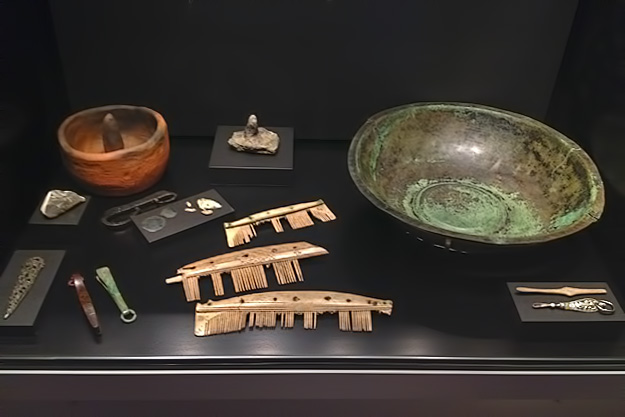
Archeological evidence suggests otherwise. These wild invaders, said to eat greedily with their hands, actually used spoons, forks, and knives, and the wealthier among them drank from glass goblets imported from the Roman empire. Almost every Viking grave contains one or more combs, and wash basins, ear spoons, and even glass mirrors suggest that they were extremely conscious of their personal hygiene. People wore strings of beads with pendants and buckles made of silver or bronze, and gold or silver thread and silk ribbons were often incorporated in their textiles. Even everyday articles, such as needle cases and purses, were made of precious materials and worn as decorations.
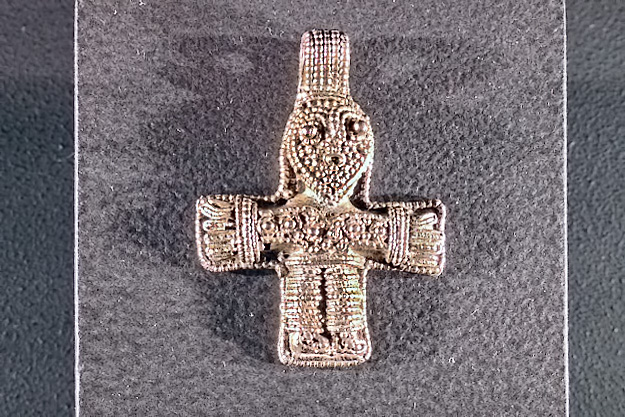
In recent years, archeologists have gained even more insight into these Norsemen who were scattered across Scandinavia between A.D. 750 and 1100. The name Viking hails from the ancient Norse word for a raid or trading trip. Men, women, and even children often “went on a Viking,” but for the most part they were farmers who built longhouses (large dwelling houses), raised crops, kept livestock, hunted, and fished. Certainly, they never referred to themselves as Vikings, nor did they wear horned helmets.
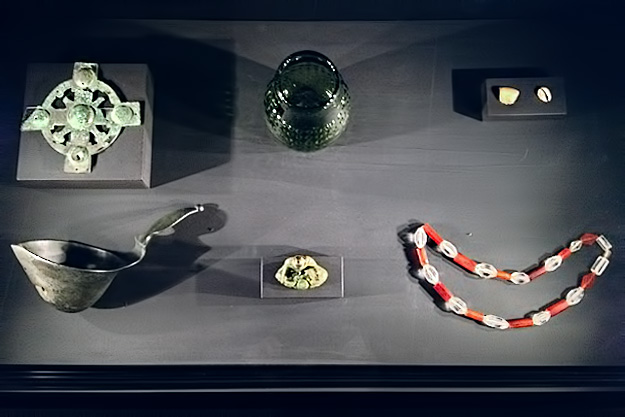
Though much of what we believe about Vikings is inaccurate, one thing remains true. Vikings rank among the world’s greatest explorers and traders. Artifacts discovered in archeological digs include an engraved brass Celtic cross from Ireland, Cowrie shells from the Red Sea, a bronze Buddha figurine from India, and carnelian beads from the Black Sea. These items and many more were on display at the Vikings exhibition at the Field Museum in Chicago, which was the only U.S. stop on its international tour.
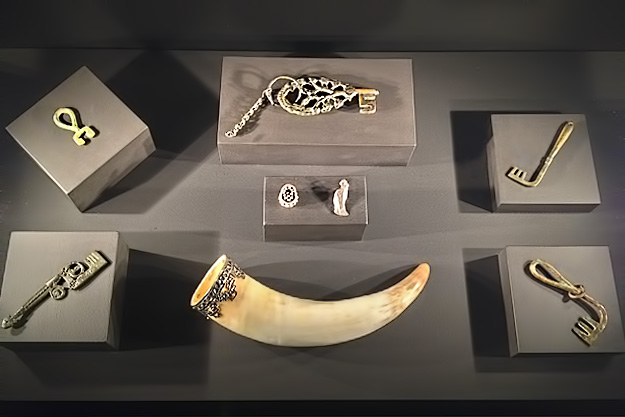
Disclosure: I was a guest of Viking Cruises, a major sponsor of the Vikings exhibition, during this fascinating behind-the-scenes presentation at Chicago’s Field Museum.

Nice! Great Post, Another interesting sharing informative about on this blog . Keep it great ! 😉
Thanks so much Aijika.
Fascinating artifacts … shame they had no written language, but they were too busy being awesome to develop it. Just kidding of course, but it may have emerged in due time had history went differently…
Did they have their own writing system or used one? Have there been found any writings from them?
They did have “runes” Rahman, which were carved on thin metallic sheets that were used as protective amulets.
This certainly sounds like an excellent exhibition and a must see for any medieval enthusiasts.
However I do have a certain issue with the statement the Vikings never wrote about their own culture because this is untrue. The Vikings would indeed enscribe their own graffiti in the form of runes (a form of Nordic alphabet).
For example, in the Neolithic burial mound of Maeshowe in Orkney, runes left by Norse raiders clearly dictate their motives for raiding the Scottish northern isles.
Although a small quarm I felt the need for it to be addressed and I would urge everyone to pay a visit to this exhibition as some of the artefacts pictured look truly spectacular.
And of course I would encourage as many people as possible to visit Orkney to gain a first hand view of the viking’s legacy and their impact upon Northern Europe.
Hi James: I appreciate your insightful comments. I based my statement about ruins on a presentation given by the curator of the exhibition, the Director of the Swedish History Museum. It is true that the Vikings created runes, which were used in their worship rituals. According to the curator, and to exhibits in the show, these usually took the form of small, thin sheets of metal, onto which inscriptions were engraved. Rather than containing any historical data, these inscriptions were spells and incantations that provided protection to the wearer. However after reading your comment I looked up Maeshowe in Orkney and read about the Norse runes carved into the burial chamber. Fascinating! I wish I had known about this prior to the premiere of the show, as I would have asked the curator for his opinion. Thanks for sharing.
Sounds like a wonderful exhibit!
It definitely is, Emma
What a amazing museum .A sure sure visit to Chicago.Thanks for such a post.
Keep sharing!!
Hi Ray: Chicago’s Field Museum is definitely one of the best museums in the world. Hope you make it to Chicago so you can see for yourself.
Really cool post. I can’t believe that much of what I thought about the Vikings is actually wrong.
You and me both, Brandon 🙂
You just put this museum on my list for a Chicago trip I hope to make before October! Thanks for the tip!
Libbie
P.S. I would love for you to tell us about the Art Institute of Chicago, another one on my list.
Hi Libbie: I’m in Chicago for several months, and I haven’t yet had the opportunity to see the new modern wing of the Art Institute, so I’ll try to do that!
Sounds like a great exhibit. You always have beautiful photos and interesting information. The Field Museum has always been on our list, we just need to get to Chicago!
Hi Mary: Chicago is a fantastic city, and one that so many people bypass. Hope you do get to visit, because there’s a ton of stuff to do.
This is the best museum. I grew up in a Chicago suburb and visited the Chicago museums often.
Thanks for.posting this information.
You’re welcome Paulette. Chicago has some of the best museums in the world.
Barbara– I so appreciate your perspective on things. You tell it like it is! I learned about the Vikings during a recent trip to Norway, and very little of it matched what I learned in high school world history. Bravo for your insights!
Thank you, Irene! I am constantly amazed by how wrong the history books are. Thank goodness we can travel and learn the truth.